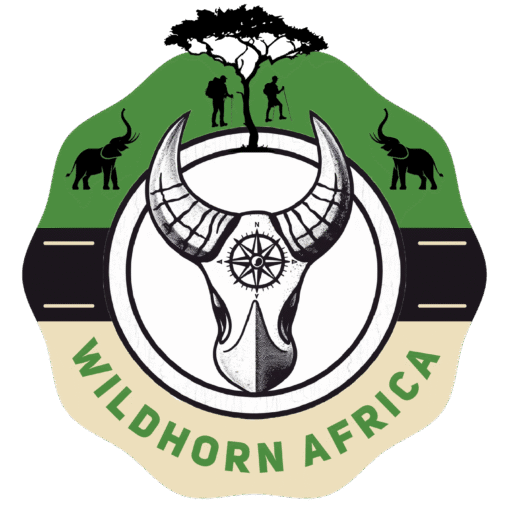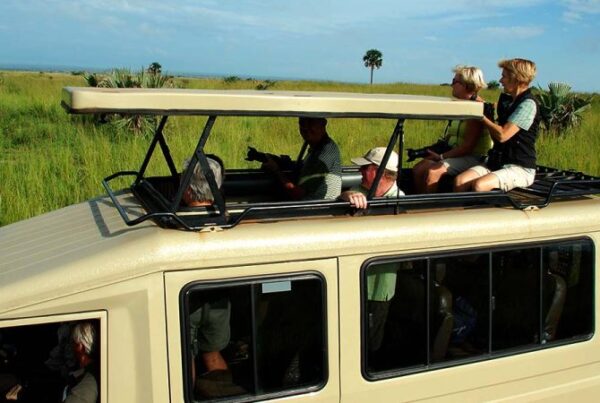What Level of Fitness Do I Need for Gorilla Trekking in Uganda? | Complete 2026 Trekking Preparation Guide
What Level of Fitness Do I Need for Gorilla Trekking in Uganda?
To stand in the misty heart of the African rainforest and lock eyes with a mountain gorilla is one of the most profound experiences on Earth. It is an encounter that transcends adventure, touching something ancient and intimate within the human spirit. Yet, before that breathtaking moment unfolds — before the silence of the jungle and the gentle rustle of leaves reveal a family of gorillas — one must first undertake a journey that demands both physical readiness and emotional endurance. The question often arises among travelers: What level of fitness do I need for gorilla trekking in Uganda?
The answer lies not only in physical strength but in preparation, patience, and mindset. Gorilla trekking is neither an extreme sport nor a casual stroll; it is a challenge woven with awe, resilience, and discovery. It is a journey through unpredictable terrain — steep slopes, tangled vines, and humid air — that tests endurance yet rewards with one of nature’s greatest gifts. Understanding what level of fitness is required allows every traveler to approach this experience with confidence, safety, and respect for the magnificent environment in which it takes place.
This in-depth guide explores the physical demands of gorilla trekking in Uganda, detailing what to expect on the trail, how to prepare, and how travelers of different fitness levels can enjoy this extraordinary adventure without fear or hesitation.
Understanding Gorilla Trekking: More Than a Hike
Before diving into fitness requirements, it’s important to understand what gorilla trekking actually entails. The activity is a guided expedition through the dense rainforests of Bwindi Impenetrable National Park or Mgahinga Gorilla National Park in southwestern Uganda. The goal is to locate a specific habituated family of mountain gorillas — groups that have gradually become accustomed to human presence through years of careful conservation work.
Each trek begins early in the morning, after a briefing at the park headquarters. Visitors are divided into small groups (no more than eight people) and assigned to different gorilla families, each found in varying parts of the forest. Rangers and trackers lead the group through the jungle, navigating natural obstacles like muddy slopes, fallen trees, and thick undergrowth. The duration of a trek can vary significantly — from as little as 30 minutes to as long as 6 or even 8 hours — depending on where the gorillas have moved overnight.
This unpredictability is what makes physical readiness so essential. The forest is not tamed, the trails are not paved, and the experience is meant to feel as natural as possible. The altitude (ranging between 1,200 and 2,600 meters above sea level), humidity, and steep gradients combine to create an environment that is as challenging as it is enchanting. Thus, while almost anyone can take part, a moderate level of fitness is recommended to enjoy the trek comfortably and safely.
The Terrain: What Makes It Demanding
Uganda’s gorilla habitats are among the most biologically rich yet physically demanding environments in Africa. The Bwindi Impenetrable Forest lives up to its name — a vast, ancient jungle where paths wind through dense vegetation and slippery soils. The word “impenetrable” is not poetic exaggeration; it is a reality that every trekker feels underfoot.
The trails are rarely flat. Instead, they rise and fall dramatically as they cut across ridges, valleys, and streams. Trekkers often need to balance on uneven ground, step over roots, and use vegetation for support. During or after rainfall — which can occur unexpectedly in these equatorial regions — the paths become muddy and slick, adding to the challenge.
In Mgahinga Gorilla National Park, the terrain differs slightly but remains equally rewarding. The park sits on the slopes of the Virunga Volcanoes, where the air is cooler but the altitude higher. Hikes here can involve climbing gentle volcanic slopes covered in bamboo forests, which though less dense than Bwindi, still require stamina.
In both locations, trekking is not rushed. Guides set a steady, manageable pace, pausing frequently to allow rest and appreciation of the surroundings. Even those who initially feel challenged often find that the rhythm of the forest itself — its calls, scents, and sounds — provides motivation to keep moving forward.
The Physical Fitness Spectrum: Who Can Go Gorilla Trekking?
The beauty of Uganda’s gorilla trekking experience is its accessibility. It is designed not exclusively for athletes but for ordinary travelers of varied ages and abilities who possess a reasonable level of health and mobility. Many visitors in their 50s, 60s, and even 70s successfully complete the trek every year.
That said, the level of fitness required depends largely on one’s expectations and approach. Those with a moderate level of fitness — capable of walking or hiking for several hours with breaks — will generally manage comfortably. Individuals who engage in light regular exercise such as walking, cycling, or swimming find the trek challenging but achievable.
For travelers with limited mobility or health concerns, the Uganda Wildlife Authority has made special provisions. Sedan chairs, locally known as “gorilla stretchers,” are available in Bwindi and Mgahinga, allowing visitors to be carried by a team of porters through the forest for an additional fee. This service ensures that even those unable to hike long distances can still experience the wonder of seeing gorillas up close.
Ultimately, gorilla trekking is less about athletic ability and more about perseverance, attitude, and adaptability. The terrain can be conquered by anyone who approaches it with patience, determination, and respect for the journey.
Preparing Physically for the Trek
Preparation plays a significant role in making gorilla trekking a comfortable and rewarding experience. Travelers are encouraged to begin light physical conditioning at least a few weeks before their safari.
Walking or hiking on uneven terrain helps build endurance and strengthens leg muscles. Incorporating uphill and downhill training — even simple stair climbing — mimics the movements required in Bwindi’s steep terrain. Cardiovascular exercises like jogging, cycling, or brisk walking improve lung capacity, which becomes useful at higher altitudes.
Stretching and flexibility training also matter. Navigating slippery paths and ducking under vines can strain the back and joints if the body is unprepared. Practicing balance exercises helps minimize fatigue and risk of slips.
In short, the more one prepares physically, the more enjoyable the trek becomes. Travelers who invest in conditioning often report feeling more energized and able to focus on the emotional experience rather than the physical challenge.
The Role of Altitude and Climate
One of the subtle challenges of gorilla trekking is altitude. Bwindi’s elevation ranges between 1,200 and 2,600 meters (3,900 to 8,500 feet) above sea level, while Mgahinga can reach even higher altitudes along its volcanic slopes. At these elevations, the air is thinner, meaning less oxygen per breath. This can lead to mild shortness of breath or fatigue, especially for those not accustomed to hiking in highlands.
Acclimatization happens naturally for most travelers after a few hours, but staying hydrated and pacing oneself is crucial. The humidity of the rainforest compounds this effect, as the air is thick and the body loses water through sweat even when temperatures feel cool.
Rainfall, too, is frequent and unpredictable, especially between March and May and again from September to November. Wet conditions make trails more slippery, which can test stability and stamina. However, the lush greenness of the forest during these months creates an almost mystical atmosphere, and experienced guides adapt routes to ensure safety regardless of weather.
The Importance of Porters and Local Support
One of the most reassuring aspects of gorilla trekking in Uganda is the presence of porters — local men and women trained to assist travelers during the trek. Hiring a porter is highly recommended, even for fit individuals, not only for convenience but also for community support.
Porters can carry backpacks, water, cameras, and other gear, allowing trekkers to focus on balance and movement. They also offer a steadying hand during steep ascents or muddy descents, significantly reducing the risk of falls. Beyond practical help, hiring porters provides direct income to local communities living around the parks, reinforcing their investment in gorilla conservation.
The Uganda Wildlife Authority also provides armed rangers to accompany every group, ensuring both safety from wild animals and reassurance for travelers unfamiliar with the forest environment. These professionals are not just protectors but storytellers, enriching the experience with knowledge of ecology, tracking techniques, and local culture.
Managing Energy and Mindset on the Trail
Gorilla trekking is as much a mental journey as it is a physical one. The forest demands patience and adaptability. Some treks end quickly when gorillas are nearby; others require hours of steady movement before the family is located. The unpredictability can test endurance, but the key lies in pacing and mindset.
Rangers maintain a moderate pace, stopping often for rest, hydration, and photos. They also keep morale high with stories and humor, reminding trekkers that every step brings them closer to one of the world’s most extraordinary encounters.
Those who approach the experience with calmness, curiosity, and respect often find the journey itself as fulfilling as the destination. The forest’s sounds — chirping birds, whispering leaves, distant hoots — create a meditative rhythm that helps fatigue fade into fascination.
Fitness in Context: Comparing Uganda to Rwanda and Congo
Uganda’s gorilla trekking is often compared with that of neighboring Rwanda and the Democratic Republic of Congo, and the question of difficulty frequently arises. While all three countries protect the same species of mountain gorilla, Uganda’s terrain tends to be more varied and rugged, especially in Bwindi. The park’s steep slopes and thick vegetation can make treks longer and more challenging than Rwanda’s relatively open Virunga slopes.
However, Uganda offers a broader range of routes and altitude options. Park authorities match visitors to gorilla families based on estimated trek length and difficulty. For instance, older travelers or those with limited fitness may be assigned to groups located closer to the trailhead, ensuring a manageable experience. Conversely, adventurous hikers may opt for more remote families that require longer treks, turning the journey into a full-day expedition.
This flexibility makes Uganda ideal for travelers of all fitness levels — from casual nature lovers to seasoned hikers — while still preserving the authenticity of the experience.
Health Considerations and Safety
Beyond fitness, overall health readiness plays a vital role in gorilla trekking. Travelers with heart conditions, severe asthma, or mobility limitations should consult a physician before the trip. Altitude and humidity can strain the body, especially when combined with exertion.
Vaccinations are mandatory, with Yellow Fever required for entry into Uganda, and other recommended immunizations include Hepatitis A, Typhoid, and Tetanus. Insect repellent, sunscreen, and sufficient hydration are essential on the trail.
For minor injuries like cuts or scrapes, guides carry first-aid kits, and travelers are advised to bring personal medications. Safety briefings at the start of each trek outline behavior near gorillas, emphasizing calmness and quiet observation. Uganda’s track record for visitor safety in gorilla parks is exemplary, thanks to strict regulation and professional ranger teams.
The Reward After the Trek: Meeting the Gorillas
When the journey finally ends and the trackers signal that gorillas are near, exhaustion vanishes. The forest grows still, anticipation quickens, and then — out of the shadows — a black silhouette moves. A silverback appears, massive and majestic, his presence commanding yet peaceful.
For the next hour, fatigue fades into awe. The world seems to shrink to the few meters separating humans and gorillas. Mothers cradle infants, juveniles tumble playfully, and the silverback watches over his family with calm authority. Every sound, every gesture feels sacred.
That moment erases the memory of the climb. The aches in the legs, the sweat on the brow — all dissolve into the realization that you are witnessing something extraordinary, something few people on Earth will ever see. It is the perfect reminder that fitness, while necessary, is only a means to reach the heart of this experience. The true journey is emotional.
Post-Trek Reflection and Recovery
After the trek, most travelers describe a deep sense of fulfillment and gratitude. While physical exhaustion is normal, it is quickly replaced by the exhilaration of achievement. Many lodges around Bwindi and Mgahinga offer massages or relaxation therapies specifically designed for trekkers, allowing muscles to recover while the mind processes the experience.
Hydration, nutrition, and gentle stretching help ease any soreness. Sharing stories around the lodge fire, reviewing photos, and watching the mist roll over the hills create a reflective atmosphere — one that reinforces the sense of accomplishment and wonder that defines gorilla trekking in Uganda.
Why Preparation Matters Beyond Fitness
Fitness for gorilla trekking is not just about surviving the hike; it’s about maximizing the experience. When the body is prepared, the mind is free to absorb the beauty of the surroundings — the scent of wet earth, the songs of tropical birds, the distant drum of waterfalls. When one is physically comfortable, the trek becomes not a challenge to overcome but a journey to savor.
Furthermore, good fitness ensures ethical interaction. The less fatigued one is, the less likely they are to make noise, move abruptly, or inadvertently disrupt the gorillas. Prepared travelers become better stewards of the wilderness, contributing to conservation through responsible behavior.
Conclusion: Fitness as a Gateway to a Life-Changing Experience
The question of what level of fitness is needed for gorilla trekking in Uganda has no single answer because the experience is tailored to human diversity. A basic level of fitness, combined with determination, adaptability, and respect, is enough to make the journey possible for nearly everyone.
Gorilla trekking is not about racing through the forest but about moving in rhythm with it — step by step, heartbeat by heartbeat, until the veil of green parts to reveal one of nature’s most intelligent and gentle beings. It is about surrendering to the terrain, embracing the challenge, and discovering within yourself the strength to reach a moment of pure connection with the wild.
For travelers ready to take that journey, it is best to book their Africa tours and safaris with WildHorn Africa, a trusted expert in crafting personalized and safe gorilla trekking adventures. With experienced guides, seamless logistics, and deep respect for conservation, WildHorn Africa ensures that every traveler — regardless of fitness level — experiences the gorillas of Uganda with comfort, care, and profound awe.
The mountains will test your endurance, but they will also reward you with one of the rarest encounters on Earth — an encounter that speaks not only to the strength of your body but to the resilience of your spirit.





 WildHorn Africa – Authentic and unforgettable tours across Africa, guided by local experts who know the land, wildlife, and culture best.
WildHorn Africa – Authentic and unforgettable tours across Africa, guided by local experts who know the land, wildlife, and culture best.


